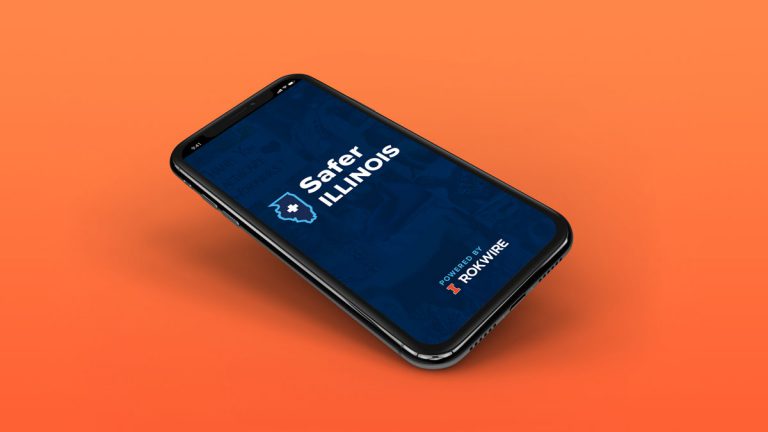CHAMPAIGN – Twice-a-week COVID-19 testing is mandatory for all students, faculty and staff at the University of Illinois at Urbana-Champaign who intend to participate in campus life.
Campus officials are now encouraging everyone on the Urbana campus to download and use the “Safer Illinois” app, which provides testing results, reminders and other personalized information.
“We believe Safer Illinois offers the most convenient, most secure and most direct tool for managing your COVID-19 status during the fall 2020 semester,” said Chancellor Robert Jones in a news release, in which he urged everyone to familiarize themselves with the app no later than Aug. 23 — the day before the start of the semester.
The app will provide those who receive a positive COVID-19 test with instructions to isolate immediately, says U of I professor William Sullivan, who leads the Rokwire initiative that developed the app.
“And we give you access to a professional care team: health professionals who will help you understand what the diagnosis means and what your next step should be,” Sullivan says.
Students who receive a positive COVID-19 will be connected to the U of I’s McKinley Health Center, and faculty and staff will receive support from OSF HealthCare.
People can also opt in to be notified of possible exposures to COVID-19. The app is able to inform those who’ve come into close proximity with others who go on to test positive for COVID-19, without ever tracking users’ locations, Sullivan says.
“No location data ever leaves a person’s phone through the app,” he says.
Instead, the app uses Bluetooth Low Energy to transmit and receive “tokens” or randomized codes to the cloud, where they’re stored in an “encrypted, secure database.”
The codes are also transmitted to nearby phones that are opted in for exposure notifications.
The codes change every 15 or 20 minutes, and “we can’t determine whose phone or what individual is associated with any of these codes,” Sullivan says.
To understand how it works in practice, Sullivan gives an example:
Let’s say two app users, who are opted in for exposure notifications, had an in-person meeting, Sullivan says. During that time, their phones exchanged anonymous codes.
If one of those people goes on to test positive for COVID-19, that user’s codes from the past few days, which are stored in the cloud, are then “pushed down to all the other users of Safer Illinois.”
When a person’s phone receives those “infected codes,” Sullivan says, it will look for a match: Are any of the codes collected over the past few days identical to the ones coming down from the cloud?
For those people we were in close contact with an infected person, the phone will find a match.
“And at that moment, you’ll get a notification that you may have been exposed to the coronavirus, and you should quarantine and get a test,” Sullivan says. “It’ll give you the next set of steps that you’re supposed to take.”
The exposure notification feature complements traditional contact tracing that will be carried out by the local health department for any positive COVID-19 cases.
C-U Public Health Administrator Julie Pryde says all test results from the U of I’s COVID-19 testing program are reported to CUPHD and reported online, together with the rest of the county’s testing results.
The app’s current testing display will serve as one of the mechanisms to gain entry to university facilities. Campus officials say a negative test within the past four days will be required in order to enter facilities.
The saliva-based COVID-19 tests, developed by a U of I team, are provided free of charge to students and employees, with more than a dozen indoor and outdoor sites across campus.
U of I researchers who’ve conducted modeling to inform the campus’ reopening decisions predict the COVID-19 testing program — in conjunction with other mitigation efforts, including mandatory face coverings, social distancing, online instruction and reduced in-person class sizes — will help keep the number of positive cases this fall to under 500.
In a COVID-19 briefing earlier this month, U of I physicist Sergei Maslov said it’s important that at least 60% of the campus opt in to the Safer At Illinois app in order for it to be effective.
Sullivan made his comments in an interview with U of I Extension’s Todd Gleason.
Christine Herman is a reporter for Illinois Public Media. Follow her on Twitter: @CTHerman
Editor’s note: NPR member station WILL’s broadcast license is owned by the University of Illinois. Its newsroom operates independently.

